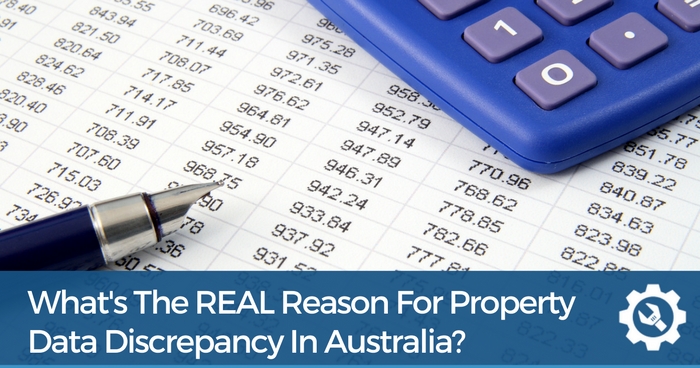What’s The Real Reason For Property Data Discrepancy In Australia?

When I first got into property investing, people said I was crazy.
“Why would you leave your safe secure job for something so risky?” they would say.
Or, “Did you hear Joe Bloggs down the road went bankrupt on his development last month?
I'm pulling back the curtain, revealing my best kept Deal Finding Secrets!
- My Secret Search Strategies: Unlock hidden cracker deals no one else knows about
- Stop wasting hours on research: Simple setup automatically hunts down hot deals for you!
- How to use Australia’s top research tool anytime to turning boring research into an exciting treasure hunt
- Bonus: Free Research Tool Credits Included!
🎯 Don’t miss this!
My favourite is, “I read in the paper last week that the housing market is flooded with units and new dwellings. I wouldn’t be getting into property these days”.
After a while, I gave up telling people that I was even interested in property investing so I didn’t have to listen to a bunch of naysayers.
Getting Serious About Getting Your Facts Right With Accurate Property Data
Let’s face it. If your source of research is the newspaper (or any type of commercial media these days) you’re not really serious about getting the facts.
Successful property investors (as opposed to part-time speculators making small talk at the weekend BBQ) use statistical information, research raw property data, and base their decisions on fact, not opinion.
In fact, whenever I hear someone say, “the housing market is doing X” I tend to switch off because I know that statement is far too broad to have any substance to it.
The truth is there are thousands of markets operating all at once and although keeping an eye on some general statistics is helpful, you need to know your own area intimately.
My investing area is often focused on just 2 or 3 suburbs!
No one has a crystal ball so no one can really claim to know what will happen tomorrow, next week, next month, or next year.
It comes down to forming your own opinion based on fact and then backing that viewpoint and taking action.
So Where Should You Be Getting Your Property Data From?
Well, this topic came up recently by one of our Ultimate Property Hub members on the Facebook forum (thanks, Adam Henry!).
It seems there is often a vast disparity between different data sources and their reporting of some of the more commonly used property data such as:
- Median price
- Median rental
- Rental yield
- Number of sales
To help bring some clarity to this debate, I dug up an old article written by Kieran Clair, editor of Australian Property Investor magazine.
Kieran interviewed representatives from four of the big players in property data distribution:
- John Edwards, founder of Residex http://www.residex.com.au
- Louis Christopher of SQM Research http://www.sqmresearch.com.au
- Cameron Kusher, senior researcher at Core Logic RPData http://www.corelogic.com.au
- Yvonne Chan, head of research Australian Property Monitors https://www.apm.com.au
Through his questions to the above contributors, Kieran presents a balanced view of just why there can be such discrepancy in this important distribution of property data.
Check out Keiran’s article here:
Whatever your source of information, bear in mind, that it’s useless unless you do something with it.
Successful investors, like those in our Ultimate Property Hub community, actually use this information by forming an opinion about their chosen market and implementing a strategy based on that data.
Speculators and naysayers tend to use property data differently. It’s either:
- To conjure up discussion at a social event or
- To justify their decision around doing nothing
Ultimately, if you want to succeed in something, property investing included, at some point you’ll need to stand out from the crowd and do things a little differently.
If you struggle with that, it might be time to revisit your reason for investing in the first place.
Check out my ‘Discover Your Why’ blog post which has a great exercise to help bring clarity to your reason for investing: https://www.propertyresourceshop.com/mindset-eliminate-self-doubts/
By completing the 10-minute exercise, you’ll discover and harness a newfound drive and motivation to succeed no matter what challenges lay ahead.
Looking for proven ways to create profits in the current market?
You'll find over 200 step-by-step case project studies, our renown Master Classes and Property Crash Courses… and heaps more!
Try the Ultimate Property Hub now –– it's free!



More confused than clear after that article. Lol
Hi Theresa. Yep, too much information can do your head in and cause more confusion than clarity 🙂 It’s important to find that balance so you don’t succumb to analysis paralysis. Let me know if there is something specific i can help clarify for you. Cheers, Matt
Hi Matt,
Thanks for your latest article. This is pretty much me. We’re very time poor, with 4 busy kids, my poor husband gets to work and do the dinner!!
We’ve made some, not so great decisions in the past also, which doesn’t help the confidence.
But I just feel like when I actually get time to sit down and do the research, I’m just fluffing around, so to speak. I’m very left brained and love structure and I just can’t seem to get any.
I need a spreadsheet or something to fill out information, record, cross-check, reference – something!!!
Do you have, and I’m sure you do, a set of steps you follow and work your way through, what information do you record?
Also when you say you restrict yourself to a few suburbs, I’ve done that and found nothing, so then had to broaden out to the whole of Brisbane, or near that anyway. Is that the way it goes sometimes??
Hi Sue thanks for the comments and I hear your frustration and glad you posed the questions as I’m sure there are many others wanting to know answers to this.
You’re right, you need to have structure around how you collect and use the data. If there is no system then there is no way to test and measure if what you are doing actually makes a difference which only leads to lack of motivation due to not achieving any defined results.
Firstly, regarding the 2 or 3 suburbs. If you haven’t uncovered anything in your chosen area after 2 or 3 months its time to change something. That might mean changing the strategy you want to implement or changing the area. I’ve chosen dud areas before and have had to make a call if it’s worth my time to continue researching. The good thing is that if you change areas, you haven’t wasted your time in that original area as you take the process and systems you learnt to implement to the next area. The knowledge you’ve acquired on how to research wont go away, you just get better at it.
Secondly, regarding structure and what data to collect. For me, in broad terms, I like to know auction clearance rates and time on the market. The rest of the commonly used data like median price is all retrospective so I tend to note the trend every 3 months and document that. As Kieran’s article says, its best to stick with one source of data so that you become familiar with what’s being produced to ensure consistency. My preference is API magazine because the source is APM which is the same for PriceFinder and I use PriceFinder a lot!
As far as documenting goes, it comes down to your own preference. I still have an affinity with tracking things manually in a logbook. I know that sounds old school but it works for me. Since everything else i do is online, having a real logbook makes things tangible for me and I like to have this connection when I’m out and about talking to agents, inspecting sites etc.
Having said that I have created some crazy spreadsheets in the past when I’m really keen on an area. But I’ll use the more specific data, on individuals streets and properties rather than broad scale information. It’s good to have 3, 6, 9 month broad data of an area (median rents & sales price, clearance rates etc) but in addition I’ll have more specific data on my area via PriceFinder because it allows you to export the specific data you need. e.g, sales trends, time on market, block sizes, rental history etc
It’s up to you how complex you want to make it but be wary of spending too much time analysing rather than being out in the market talking to agents, buyers and sellers. It could be as simple as having a spreadsheet with 3 suburbs across the top row and a list of parameters down column A. Things like, median sales & rental price, price discounting, days on market etc. I’d add extra parameters that relate to the strategy you are implementing. Eg. If its subdivision, I’ll add rows to help me clarify block sizes and precedence in the area. If its for flipping renovated property, I’ll look at the price disparity between unrenovated and renovated houses to ensure there is a decent margin to work with.
I hope that’s not too longwinded for you Sue and feel free to ask further questions. Cheers, Matt